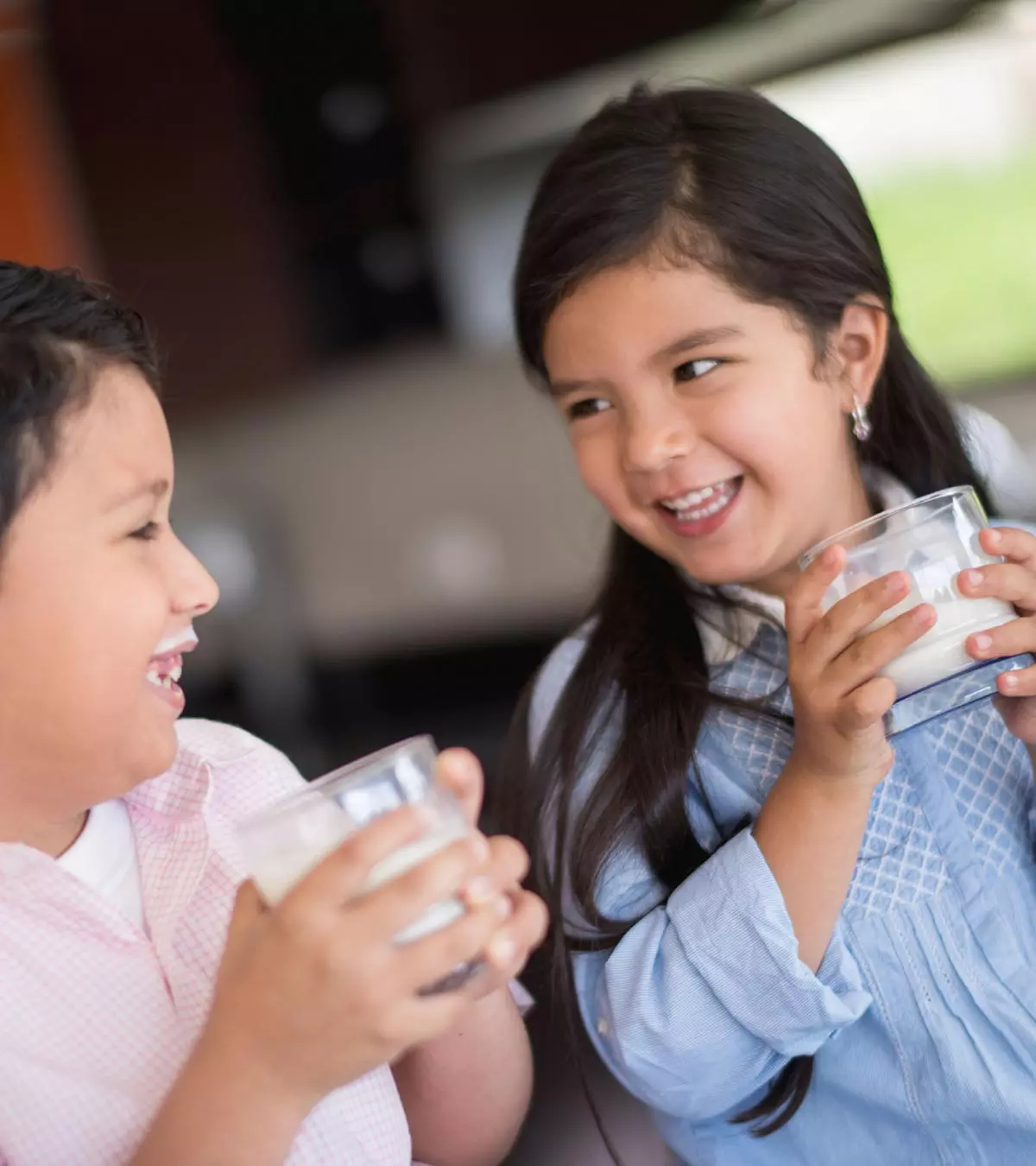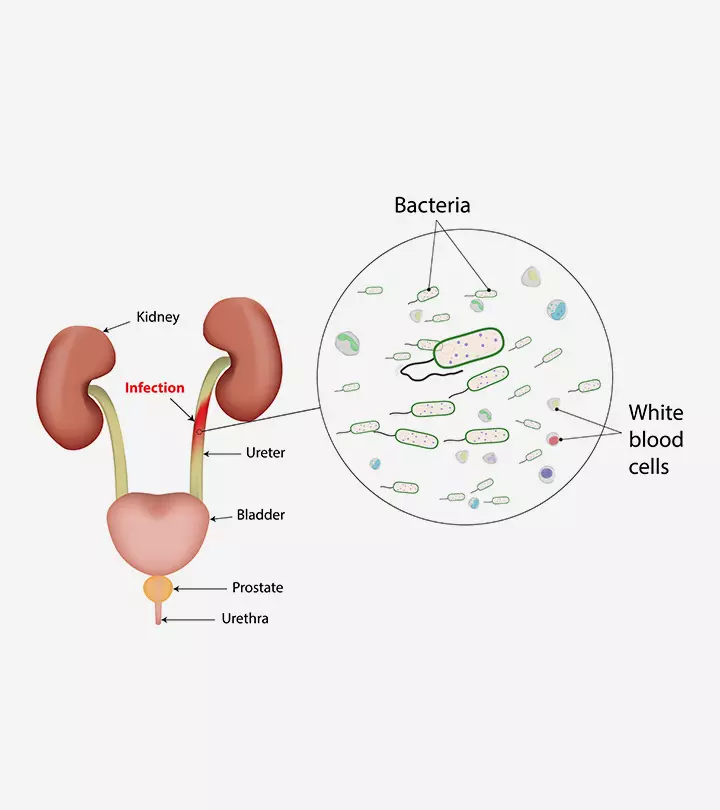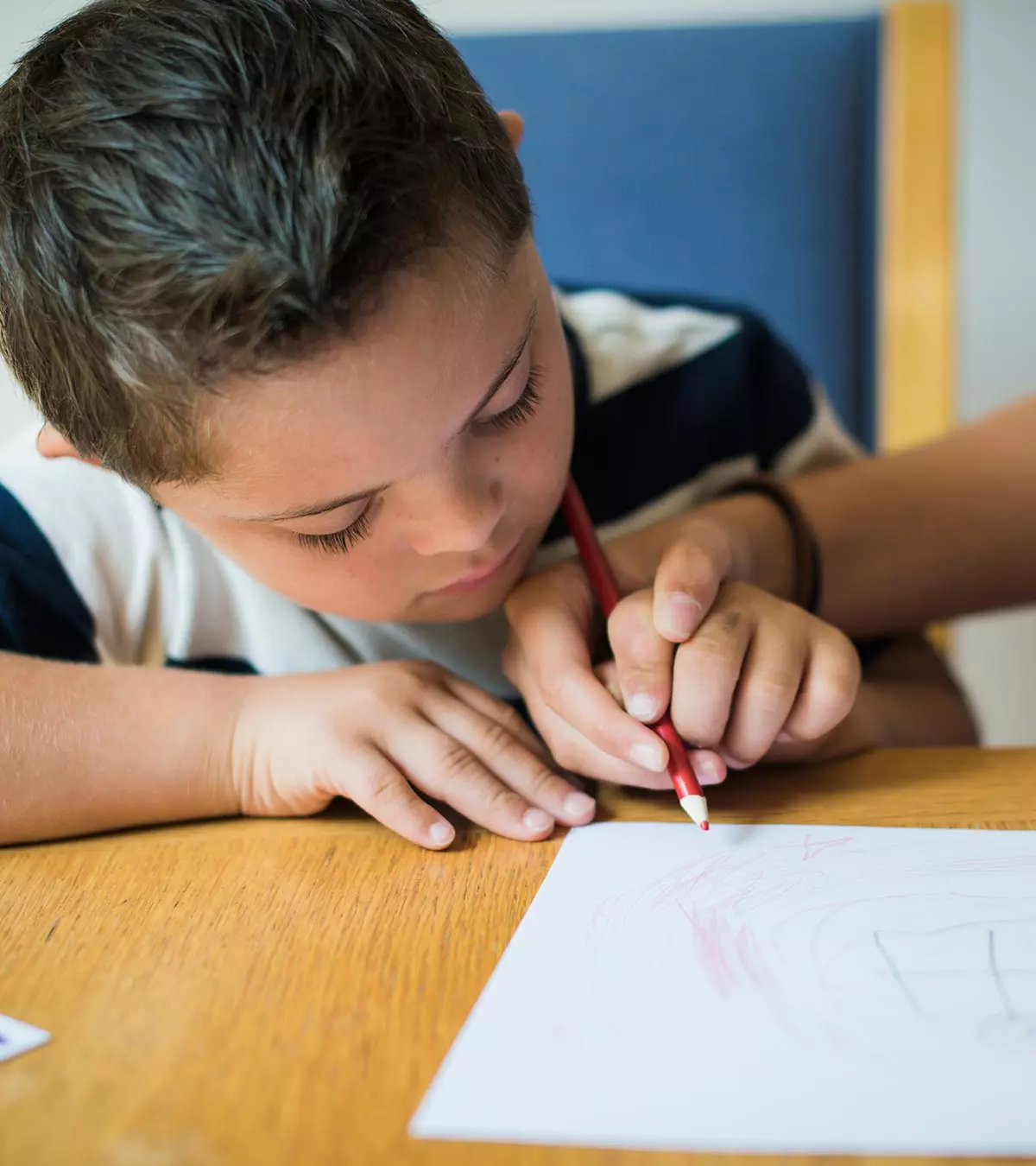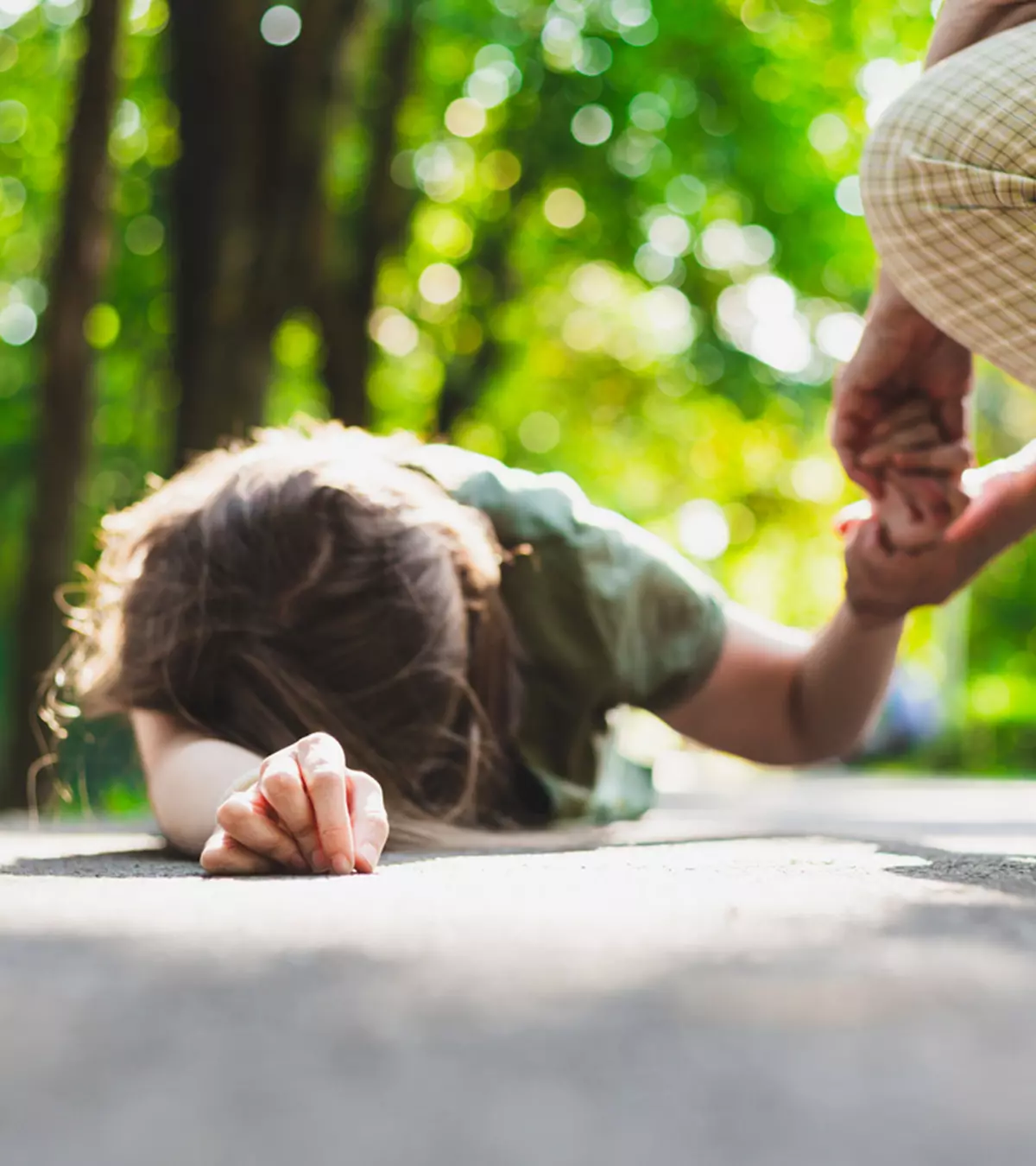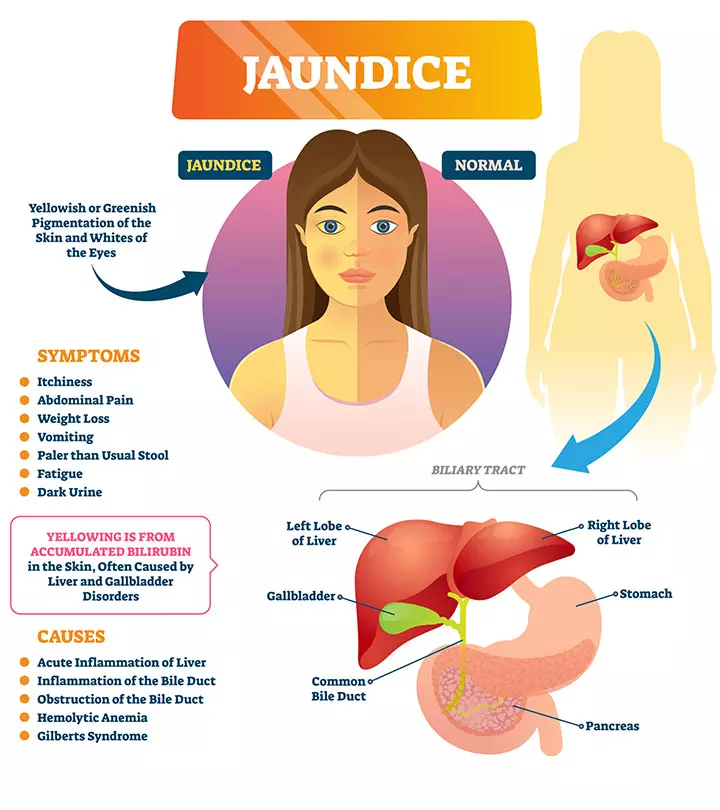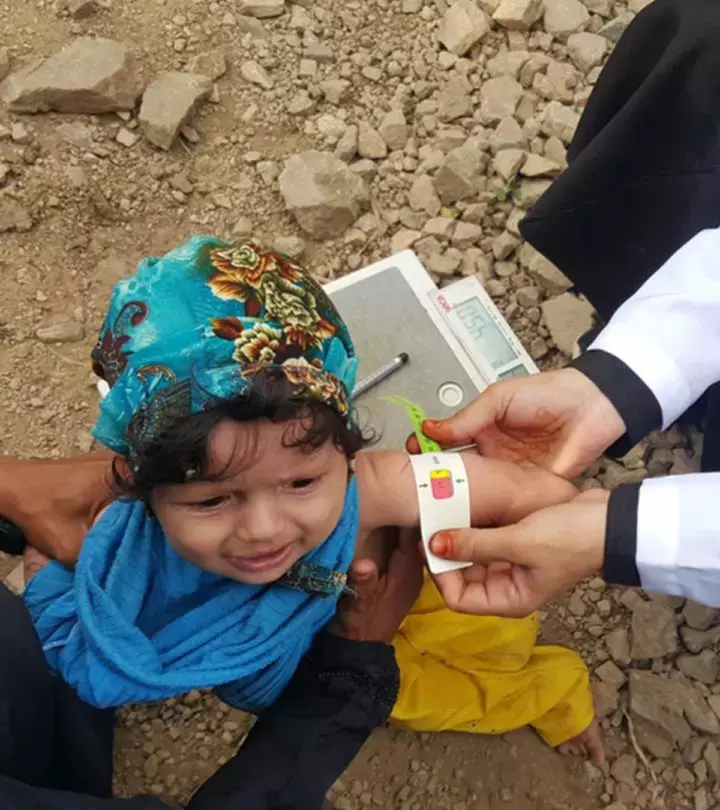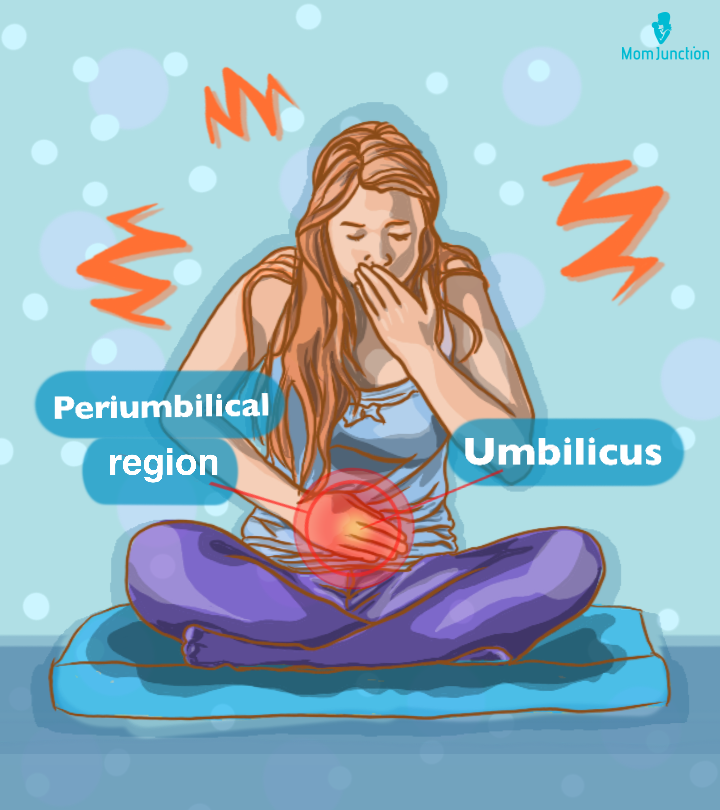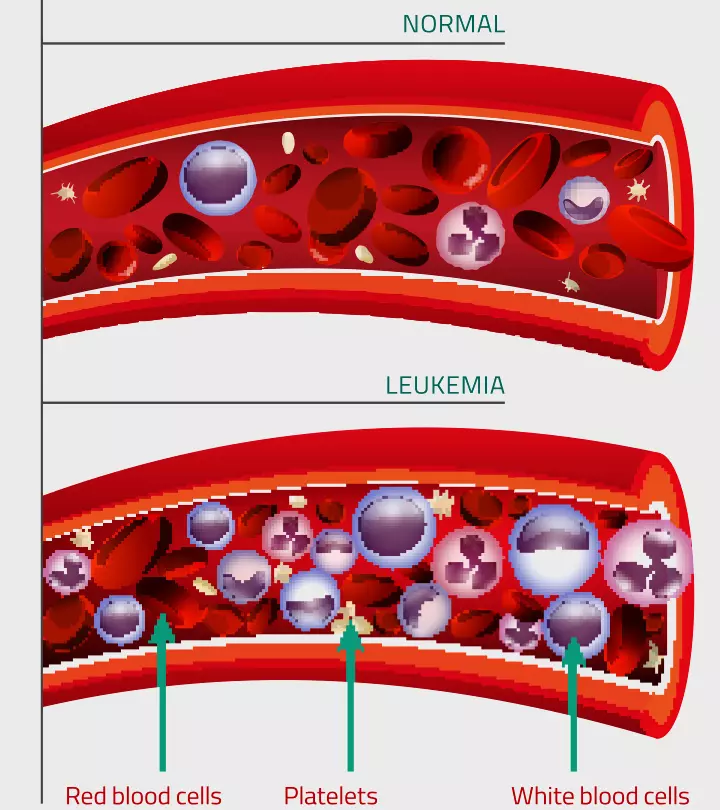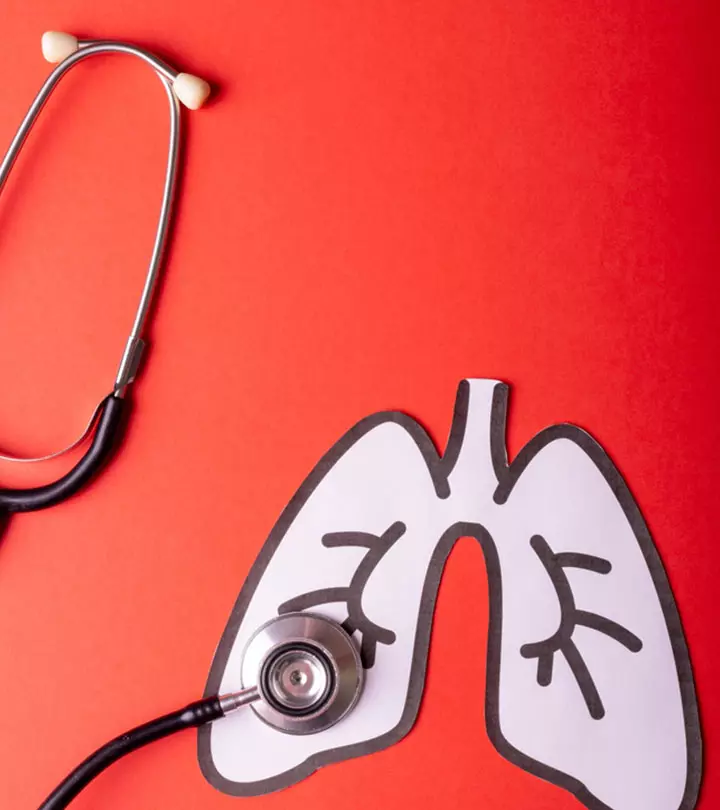
Image: Shutterstock
Primary lung cancers in children are a rare diagnosis, and the tumor characteristics may vary from adults. Uncontrolled growth of abnormal cells in one or both lungs can be secondary cancers that spread after common childhood cancers. Genetic changes in tumor suppressor genes or certain syndromes can increase the risk for lung cancer in children since they lack common predisposing factors such as smoking. Being aware of symptoms can help the parents seek early palliative care and improve the outcomes.
Read on to know the signs, symptoms, causes, tests, and treatments for lung cancer in children.
Key Pointers
- Lung cancer in children is uncommon but possible.
- Passive smoking, environmental factors, genetics, respiratory infections, and exposure to harmful substances may cause childhood lung cancer.
- Signs of lung cancer in children include a constant cough (accompanied by blood), difficulty breathing, chest pain, wheezing, and weight loss.
- Medical evaluation, chest x-ray, CT scan, PET scan, MRI, and lung biopsy are used to diagnose lung cancer in children.
- The treatment of lung cancer varies based on the type and stage of the disease and may include surgery, chemotherapy, and radiation therapy
Can Children Get Lung Cancer?
Yes. However, it is rare for children to get affected by lung cancer. In a 2022 Cancer Facts And Figures report from the American Cancer Society, lung cancer is stated to be prevalent among 1 in 812 males and 1 in 690 females aged 0 to 49 years. Therefore, the rate of incidence in the child population is meager.
Types Of Lung Cancer In Children
There are different types of lung tumors that occur in children. In some cases, cancer may spread from other tissue areas to the lungs, known as secondary or metastatic cancer, while in other cases, cancer directly affects the lungs (primary cancer) (1). Lung cancer can be broadly classified into (2):
- Small-cell lung cancer: It is less common but is likely to spread
- Non-small-cell lung cancer: It is common and spreads slowly. Adenocarcinoma, large cell carcinoma, and squamous cell carcinoma are the major types.
- Rare cancer types: Chest wall tumors, metastasized cancer (abnormality begins in other parts and spreads to the lung), carcinoid tumor, and mediastinal cancer are certain types of rare lung cancer.
What Are The Causes Of Lung Cancer In Children?
While lung cancer is rare in children, multiple risk factors that may cause lung cancer in the pediatric population include (3) (4).
- Passive smoking: When a child breathes in the smoke from the cigarette, pipe, or cigar of another person, it can affect the lungs and may result in lung cancer. Generally, passive smoking of parents. According to a report by the US Centers for Disease Control and Prevention (CDC), about one in four non-smokers, which included 14 million children, were exposed to passive smoking during 2013–2014.
According to a report by the US Centers for Disease Control and Prevention (CDC), about one in four non-smokers, which included 14 million children, were exposed to secondhand smoke during 2013–2014.
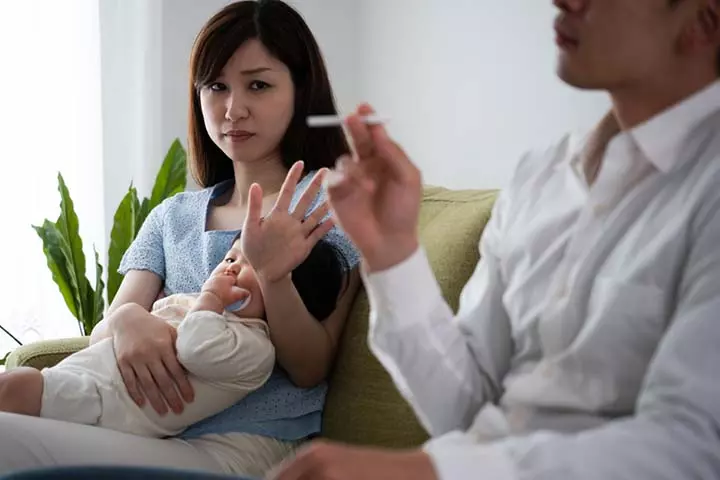
Image: Shutterstock
- Environmental factors (air pollution): Exposure to harmful compounds present in the air is one of the major causes of lung cancer.
- Genetics or family history of lung cancer: If anyone in the family, irrespective of a smoker or a non-smoker, had lung cancer, then a child’s risk of developing cancer may increase.
- Respiratory infections: When lung infections, such as pneumonia, repeatedly occur, they may lead to abnormal growth of cells.
- Exposure to asbestos, arsenic, radon, or radioactive dust: Inhalation of carcinogenic compounds and elements can be one of the reasons for lung cancer.
What Are The Signs And Symptoms Of Lung Cancer In Children?
The signs of lung cancer in children are similar to those of adults. Also, there may be no significant symptoms at an early stage of cancer.
Some of the common symptoms of lung cancer include (3) (5).
- Cough that is not cured even after a couple of weeks
- Wheezing, hoarseness of voice, or chest pain
- Fever
- Shortness of breath specially on exertion
- Blood in cough
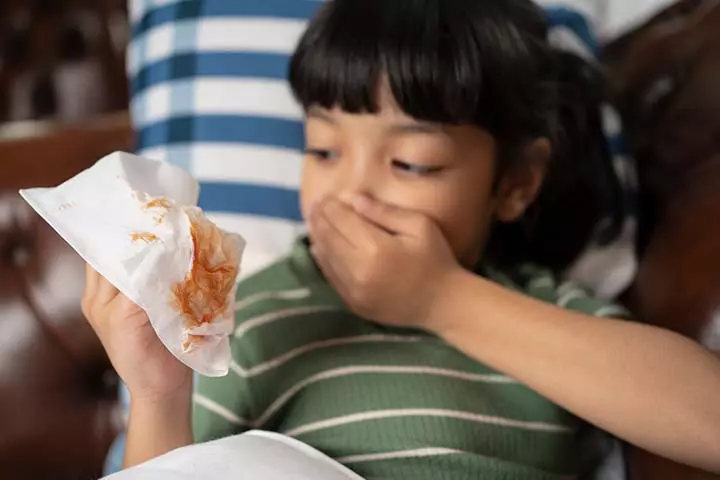
Image: Shutterstock
- Tiredness and weight loss
- Recurrence of infections
- Swelling of neck or face
The presence of these symptoms does not necessarily mean that the child has lung cancer
. Symptoms are often generic, and thus the real cause is seldom known unless the diagnosis is made.
 Did you know?
Did you know?Diagnosis Of Lung Cancer In Children
The doctor starts the diagnosis with a medical examination that could be followed by tests and scans for screening (6).
- Medical examination: It involves knowing the history (illnesses, patient’s habits, treatments done in the past) of the patient, followed by a physical examination. The doctor looks for signs such as swelling and lumps or something unusual.
- Chest X-ray: It shows the tumor as a white-grey mass or as ground glass like opacities. However, X-rays do not give much information on what type of cancer it is or how deeply it has spread.
- CT (computerized tomography) scan: Detailed 3D images of the abnormalities are shown in the scan. It also shows the size and location of the abnormality.

Image: Shutterstock
- PET (positron emission tomography) scan: It involves a CT scan wherein a low dosage of radioactive substance is injected into the patient’s body to obtain clear pictures of the infected area. It helps to assess the treatment plan for lung cancer.
- MRI (magnetic resonance imaging): This scan may or may not be done based on the type of cancer and the results of the previous scans. It can help to know if the cancer has spread to other parts of the body. Whole body scans help us find the primary source of cancer.
- Lung biopsy: This is extremely important and diagnostic. It confirms the type of cancer and is done through bronchoscopy.
The treatment plan is based on the results of the diagnostic tests.
Treatment Of Lung Cancer In Children
Treatment plans for lung cancer depend on the type and stage of the disease. The degree of malignancy of a cancerous tumor is often determined by factors such as its size, location, and aggressiveness, as well as the stage of the cancer. Some of the standard therapies include (7):
- Surgery: If the tumor has not spread to other parts of the body, surgery is performed to remove it. Although surgery is generally effective, there may be high chances of recurrence of cancer.
- Radiation therapy: When the cancer is within its limited stage, radiation is directed to destroy the cancerous cells. Sometimes, this therapy is given along with chemotherapy.
- Chemotherapy: This therapy is suggested to contain the rapid growth of cancerous cells. Medications are used to stop or slow down the uncontrolled growth of cancer.

Image: Shutterstock
Precautionary Measures That Might Reduce The Risk Of Lung Cancer In Children

Image: Shutterstock
Parents may take some general health measures that may help reduce their children’s risk of getting cancer. However, these measures cannot prevent lung cancer completely.
- If someone in the house or a public place is smoking, then consider asking them to stop or take your child away from that place.
- Reduce the exposure to harmful substances. You may get your house tested for chemicals and consider an air filtration system. If the house is located near an asbestos or chemical factory, consider changing the residence.
- Providing your children a healthy and well-balanced diet and encouraging them to do physical exercises may help in reducing the overall risk of lung diseases.
 Point to consider
Point to considerFrequently Asked Questions
1. What is the youngest age for lung cancer to develop?
Lung cancer is rare in childhood. Pleuropulmonary blastoma (PPB) is a rare childhood cancer that starts in the chest. Type I, II, and III PPB are typically diagnosed in children under 7-8 years old. But Type Ir PPB can be diagnosed at any age (8).
2. How long can children survive cancer?
Over the last 30 years, treatments and supportive cancer care have improved. Thus, more than 80% of children treated for cancer can live five years or more after treatment (9). However, there’s a need for detailed survivorship oncology research to understand how children fare after improved and targeted treatments (10).
3. Can childhood cancer be cured?
According to WHO, the prognosis or survival probability of childhood cancer depends on the country where the child lives. In high-income countries, over 80% of children with cancer find a cure. But in low-income countries, less than 30% are cured (11). Children often manage higher doses of chemotherapy drugs for shorter periods than older adults. They can also bounce back sooner from treatments.
Lung cancer in children is rare and mostly attributable to genetic factors. However, passive smoking, air pollution, and lung infections may be other possible causes. Early stages do not have definite signs, so make sure to run a check-up if symptoms such as cough, cold, chest pain, sore throat, or fever persist for more than two weeks or if they are accompanied by weight loss in kids. Be vigilant and ensure adequate nutrition, physical fitness, supportive care, and a healthy environment for your child. Take measures to reduce pollutant exposure if you stay near asbestos or chemical factories. Most types of childhood lung cancers can be treated if diagnosed at an early stage.
Infographic: How To Support A Child During Cancer?
Children with cancer require constant support and encouragement to cope with the tests and treatments. Connecting with support groups and organizations with peer mentoring could help them have more positive thoughts. Go through the below infographic to learn a few tips to support a child with cancer. Illustration: Momjunction Design Team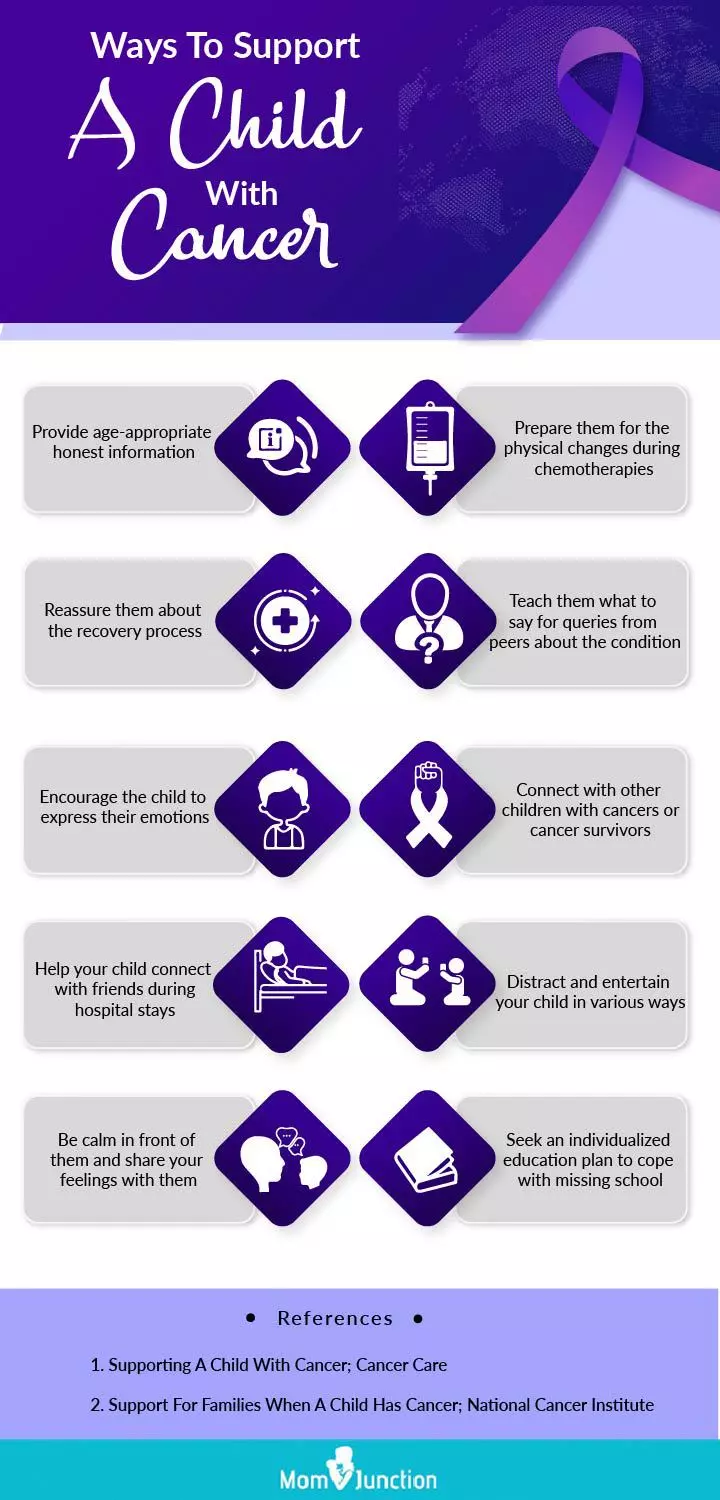
Illustration: Signs And Symptoms Of Lung Cancer In Children & Treatment

Image: Dall·E/MomJunction Design Team
Watch this informative video to learn a few key facts about lung cancer from Cancer Research UK. Understand the causes and symptoms of this widespread disease.
References
1. M. K. Dishop and S. Kuruvilla; Primary and Metastatic Lung Tumors in the Pediatric Population; Archives of Pathology (2008)
2. Lung Cancer Types; Johns Hopkins Medicine3. Lung Cancer; nhs.uk
4. Lung Cancer Risk Factors; CDC
5. Lung Cancer – Child; rarecancers.org
6. Lung Cancer; radiologyinfo.org
7. Pediatric Non-Small Cell Lung Cancer; National Organization for Rare Disorders
8. Pediatric Non-Small Cell Lung Cancer; Rarediseases.org
9. Late Effects of Childhood Cancer; Cancer.net
10. Survivors of childhood cancer are living longer; Childrenshospital.org
11. Childhood Cancer; WHO
Community Experiences
Join the conversation and become a part of our nurturing community! Share your stories, experiences, and insights to connect with fellow parents.
Read full bio of Dr. Mubina Agboatwalla
Read full bio of Dr Bisny T. Joseph
Read full bio of Swati Patwal
Read full bio of Anindita Ghatak







